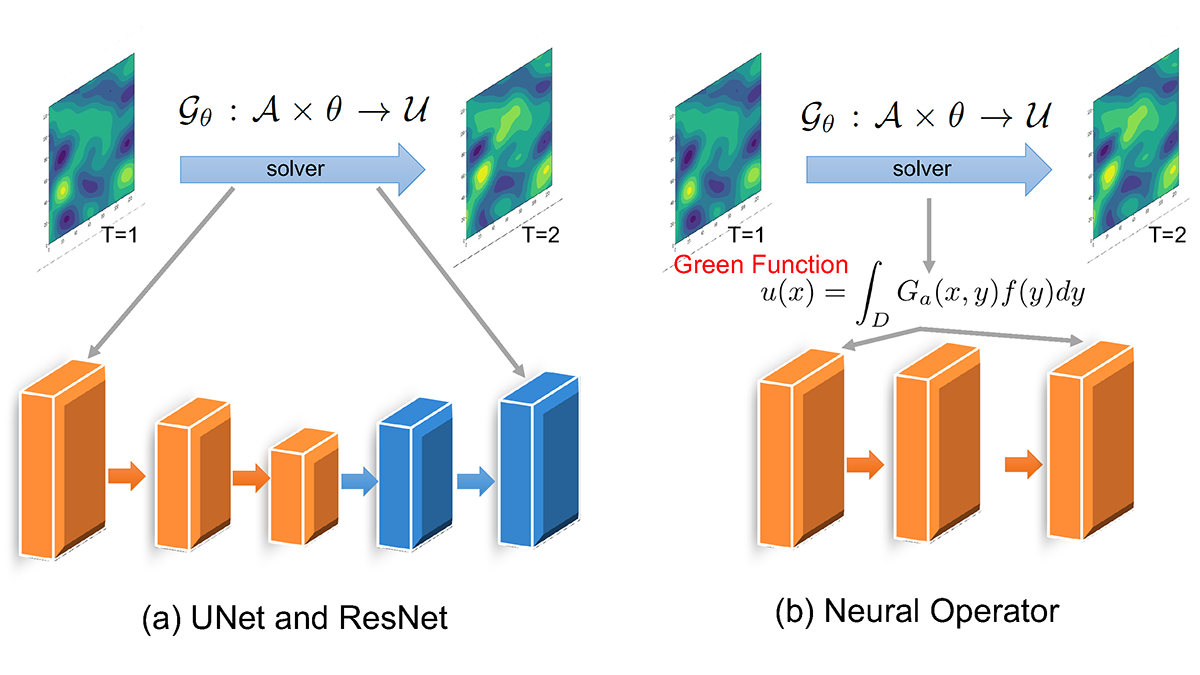Editors’ Highlights are summaries of recent papers by AGU’s journal editors.
Source: Journal of Advances in Modeling Earth Systems
Accurately simulating and appropriately representing the aerosol-cloud-precipitation system poses significant challenges in weather and climate models. These challenges are particularly daunting due to knowledge gaps in crucial processes that occur at scales smaller than typical large-eddy simulation model grid sizes (e.g., 100 meters). Particle-resolved direct numerical simulation (PR-DNS) models offer a solution by resolving small-scale turbulent eddies and tracking individual particles. However, it requires extensive computational resources, limiting its use to small-domain simulations and limited number of physical processes.
Zhang et al. [2024] develop the PR-DNS surrogate models using the Fourier neural operator (FNO), which affords improved computational performance and accuracy. The new solver achieves a two orders of magnitude reduction in computational cost, especially for high-resolution simulations, and exhibits excellent generalization, allowing for different initial conditions and zero-shot super resolution without retraining. These findings highlight the FNO method as a promising tool to simulate complex fluid dynamics problems with high accuracy, computational efficiency, and generalization capabilities, enhancing our ability to model the aerosol-cloud-precipitation system and develop digital twins for similarly high-resolution measurements.
Citation: Zhang, T., Li, L., López-Marrero, V., Lin, M., Liu, Y., Yang, F., et al. (2024). Emulator of PR-DNS: Accelerating dynamical fields with neural operators in particle-resolved direct numerical simulation. Journal of Advances in Modeling Earth Systems, 16, e2023MS003898. https://doi.org/10.1029/2023MS003898
—Jiwen Fan, Editor, JAMES

